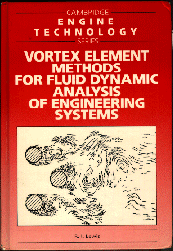
Panel methods employing surface distributions of source and vortex singularities based on the solution of boundary integral equations have been extensively used for modelling external and internal aerodynamic flows. Part I of this book describes the surface vorticity method and illustrates applications of this technique over a wide range of engineering problems in aerodynamics and turbomachines, including lifting aerofoils and cascades, mixed-flow and rotating cascades for fans, pumps or turbines, meridional flows in turbomachines, flow past axisymmetric bodies, ducts and ducted propellers or fans.
Part 2 extends surface vorticity modelling to the fairly new CFD field of vortex dynamics or vortex cloud theory, including foundation chapters on convection and viscous diffusion by the random walk technique. Vortex cloud methods are developed, again from first principles, to deal with shear layers, boundary layers, periodic wakes, bluff-body flows, cascades and aerofoils including the use of stall control spoilers. A number of useful computer PASCAL source codes are included as an appendix.
This book will be of interest to mechanical and aerospace engineers in universities and in industry, and to applied mathematicians and fluid dynamicists, particularly those interested in computational fluid mechanics.
Vortex Element Methods
for Fluid Dynamic Analysis of Engineering Systems
by R.I.Lewis
Published by Cambridge University Press, 1991